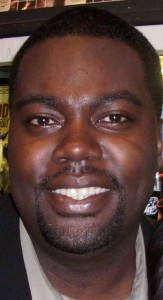
“Some mothers will unknowingly, before the summer is out, bury their sons. They will pick out a suit while his friends imprint his picture on a T-shirt. Funeral parlors will go into a peak season. Hospital emergency rooms will be littered with visitors of multiple families sharing in the same catastrophes.
Tears will fall, but life — the same happenings — will continue. This is the summer’s tale of the inner city. It is an almost exclusive occurrence where impoverished people struggle to ascertain the value of human life.”
 I wrote that in 2010, and I have not changed my stance.
I wrote that in 2010, and I have not changed my stance.
I sat in my favorite Starbucks reading a recent article in the Chicago Tribune that said 201 of the 259 homicide victims in the first six months of 2012 were young black males.
Why is everyone surprised?
It is the same cycle that has been going on for years. As soon as the school bells ring and the temperature rises, bodies drop.
Black bodies drop.
Little black boys and girls die.
I was probably the only one that did not have any emotional reaction after hearing about the 7-year-old girl killed on the front porch in Austin.
Residents, pastors, parents and teachers continue to focus on the violence. They continue with the same cries for shootings to stop, but every year it is the same thing.
It is high time to focus on the cause.
I blame the code of silence above all else, but it is not the usual code that involves the police.
This code involves family members, friends and other peers. It involves the preacher, the liquor stores and pop culture.
The silence echoes in family, a member’s secret support of drug selling because of financial gain. That mother raised the little gangbanger and as long as money was coming into the house, there was no issue. And daddy was proudly behind bars telling about how he raised a real-ass n—.
There is a neighbor at this very moment peering through the blinds of a living room window watching as a drug dealer runs to his stash for a drug transaction.
There is a storefront preacher that boasts about an afterschool program that barely has participants, but he receives grants.
There is some ex-felon at this same moment bragging about how easy his time was in some state penitentiary. They tell these stories as if they are rites of passages for the next failing generation.
And then how hypocritical is it for these same ex-felons to join a nonprofit organization and say they want the gunfire to cease?
It is pop culture that feeds the need to be popular, so you have all these young males wanting to be rappers, girls dancing seductively just to be in a YouTube video in order to be the next video vixen.
Both the rapper and the want-to-be vixen play out locally what they see in a national media campaign.
Rappers show how to remain mediocre and recycle the same damn themes.
Religion teaches passive-aggressive attitudes. Mix this with second-class citizenship and look at the violence.
This is what is being touted as an identity for youth.
These youth have no idea about who they are. The essence of poverty has been so internalized that becoming part of the cycle is normal. Perpetuating the stereotypes and criminal behavior becomes second nature.
Add this with the way African-Americans view tragedy and crisis and we have generations that never knew how to cope with post traumatic stress.
Many of us have never known an identity outside of white policy. We continue to perpetuate behaviors based on dependency and the emancipation of chattel slavery. But true schools of thought never focused on the “broken object relations” when the slaves were to be freed.
We fought for a physical freedom, yet never addressed the PTSD that would linger for generations. We were never able to gain secure attachments after the Civil War. That is to say, who are we in a land that barely recognizes the contributions of free labor?
Even more it is the “double- consciousness” that DuBois writes about, or the “mis-education” categories in Woodson. They all tie in to the idea that we haven’t declared an identity as African-Americans. We have experiences that dictate behaviors based on socioeconomic status, but not a unified identification after the civil war.
We have figures that benchmark turning points (Malcolm X, Rosa Parks, Martin Luther King, President Obama), but there lacks an agreement of who we are. We may never know, but how do we shape policies that reflect the myriad of experiences (drug policies, conviction rates, costs of education, mental illnesses)?
And until we focus on the deeper issues of individuality and characteristics we will continue to see cycles of summer deaths.
Awesome article.